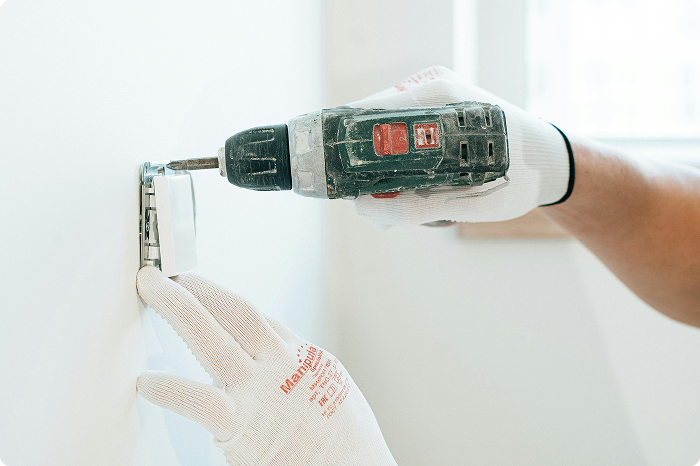Solving Unresponsive Switches and Wiring Issues: A Homeowner's Guide
By Jake Wallace · Jul 25, 2025

Dealing with unresponsive switches and wiring issues in your home can be incredibly frustrating and even hazardous. Not only do these switch issues affect the functionality and convenience of your home, but they can also pose significant safety risks. By understanding common causes and implementing practical solutions, you can maintain a safe and efficiently functioning electrical system. In this guide, we'll explore typical reasons for unresponsive switches, identify various wiring issues, and provide steps to remedy these problems. Let's dive in and explore how you can tackle switch issues and ensure your home remains safe and efficient.
What Causes Unresponsive Switches?
An unresponsive switch can result from several factors, from minor inconveniences to severe electrical issues. Understanding these causes is crucial for diagnosing and fixing the problem.
Common Causes of Switch Issues
- Worn-Out Switches: Over time, switches can wear out due to regular use, becoming less responsive. This wear and tear can lead to loose connections and faulty operation.
- Faulty Wiring: Improper or damaged wiring can disrupt the electrical current, causing switches to become unresponsive.
- Overloaded Circuits: Using too many devices on a single circuit can overload it, causing switches to fail.
- Loose Connections: Poorly connected wires within the switch box can result in intermittent or complete loss of functionality.
Signs of Unresponsive Switches
- No Response: The most obvious sign is when flipping the switch does nothing.
- Flickering Lights: If the lights flicker when the switch is engaged, it could indicate a wiring issue.
- Buzzing Sounds: A buzzing noise from the switch can suggest an electrical fault.
- Warm Switches: If the switch plate feels warm to the touch, it may be due to poor connections or an overload.
Identifying Wiring Issues
Wiring issues are a prevalent cause of unresponsive switches and can be hazardous if not addressed promptly. Identifying these issues early is crucial for maintaining a safe home.
Common Wiring Problems
- Deteriorated Wiring: Electrical wiring can degrade over time, especially if your home has older wiring installations like knob-and-tube wiring.
- Aluminum Wiring: Homes built in the 1960s and 1970s may have aluminum wiring, which is more prone to loosening and can cause fires if not properly maintained.
- Improper Connections: Wiring that is not securely connected can cause electrical shorts and unresponsive switches.
- Frayed or Exposed Wires: Damaged insulation can expose wires, leading to potential shortages and switch issues.
How to Detect Wiring Issues
- Voltage Testing: Use a voltage tester to check the presence of electrical current in switches and outlets before starting any work.
- Visual Inspection: Look for obvious signs of damage, such as scorch marks near outlets and switches, loose connections, and exposed wires.
- Professional Inspection: For a more thorough assessment, consider hiring a professional electrician to inspect your electrical system .
Practical Steps to Fix Unresponsive Switches
Fixing an unresponsive switch might seem daunting, but with the right tools and knowledge, you can safely address many of these issues yourself.
Step 1: Turn Off the Power
Before working on any electrical component, ensure the power is turned off at the circuit breaker to prevent any risk of electric shock.
Step 2: Remove the Switch Plate
Use a screwdriver to remove the screws holding the switch plate in place. This will expose the switch and wiring behind it.
Step 3: Inspect the Wiring
Check for loose connections, frayed wires, and any visible damage. Ensure that all wires are securely connected to the switch terminals.
Step 4: Replace the Switch
If the switch is worn out or damaged, replace it with a new one. Ensure the replacement switch matches the existing setup (e.g., single-pole or three-way switch).
Step 5: Reassemble and Test
After securing all connections, replace the switch plate and turn the power back on. Test the switch to ensure it is working correctly.
Preventive Measures for Wiring Issues
To prevent future wiring issues and ensure the longevity and safety of your home's electrical system, consider the following measures:
Upgrade Old Wiring
If your home still uses outdated wiring systems like knob-and-tube or aluminum wiring, consider upgrading to modern, safer alternatives.
Regular Inspections
Schedule periodic inspections by a licensed electrician to identify and address any wiring issues before they become significant problems .
Use the Right Components
Ensure that all electrical components, such as switches and outlets, are of high quality and appropriate for their intended use. Avoid overloading circuits and use appropriate circuit breakers .
Conclusion
Unresponsive switches and wiring issues can disrupt the functionality of your home and pose serious safety risks. By understanding the common causes and taking proactive steps to address these problems, you can ensure a safer and more efficient electrical system. Regular maintenance, upgrades, and professional inspections are key to preventing future issues and maintaining the safety and functionality of your home's electrical system.
For expert advice on fixing unresponsive switches or identifying wiring issues, or to find a reliable electrician, visit HouzTask AI to ask your questions, or use our Find a Pro service to locate skilled professionals in your area.
Need help?
Let HouzTask help you diagnose the issue or connect with a trusted local pro — in minutes.
Get Started with HouzTask